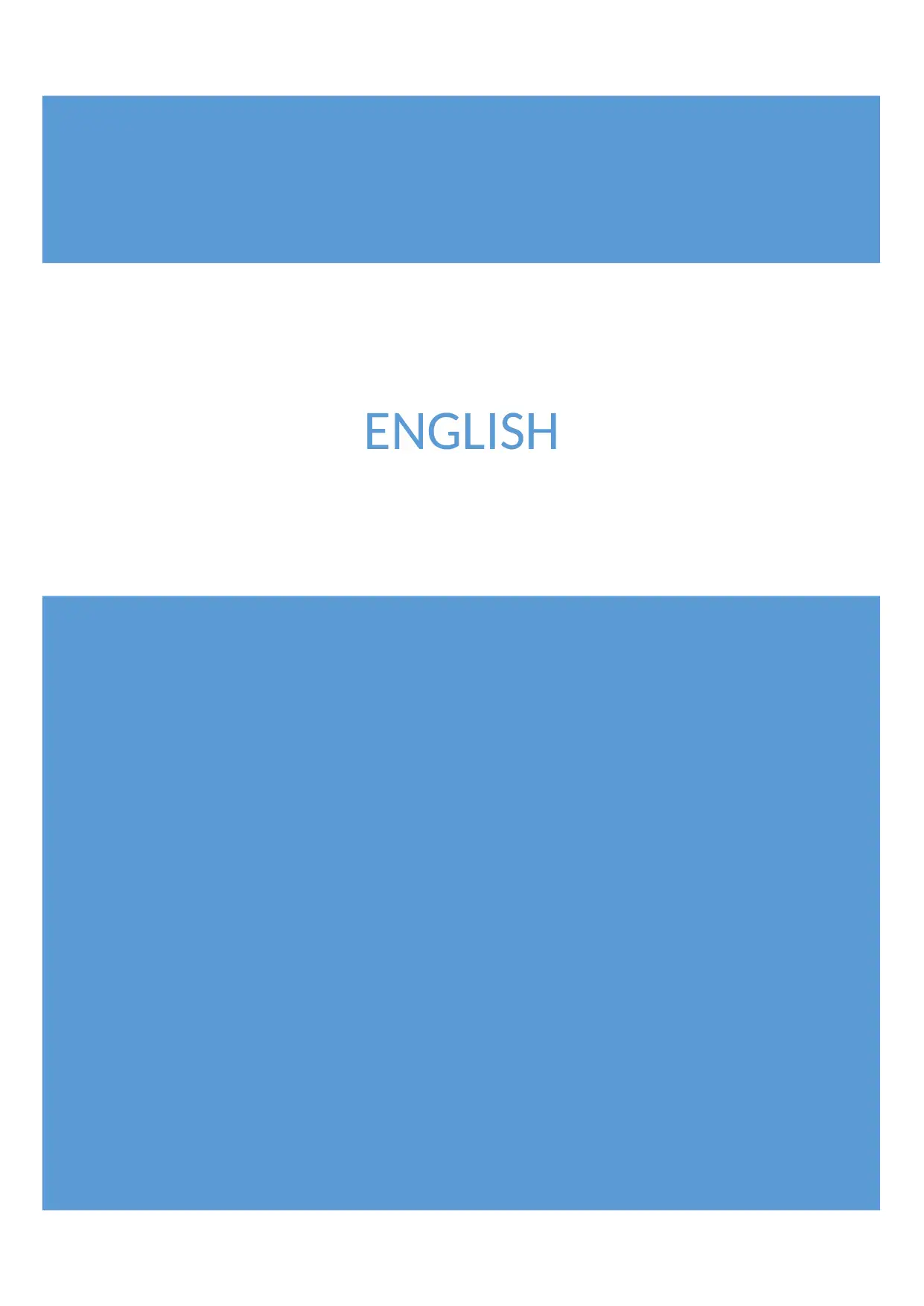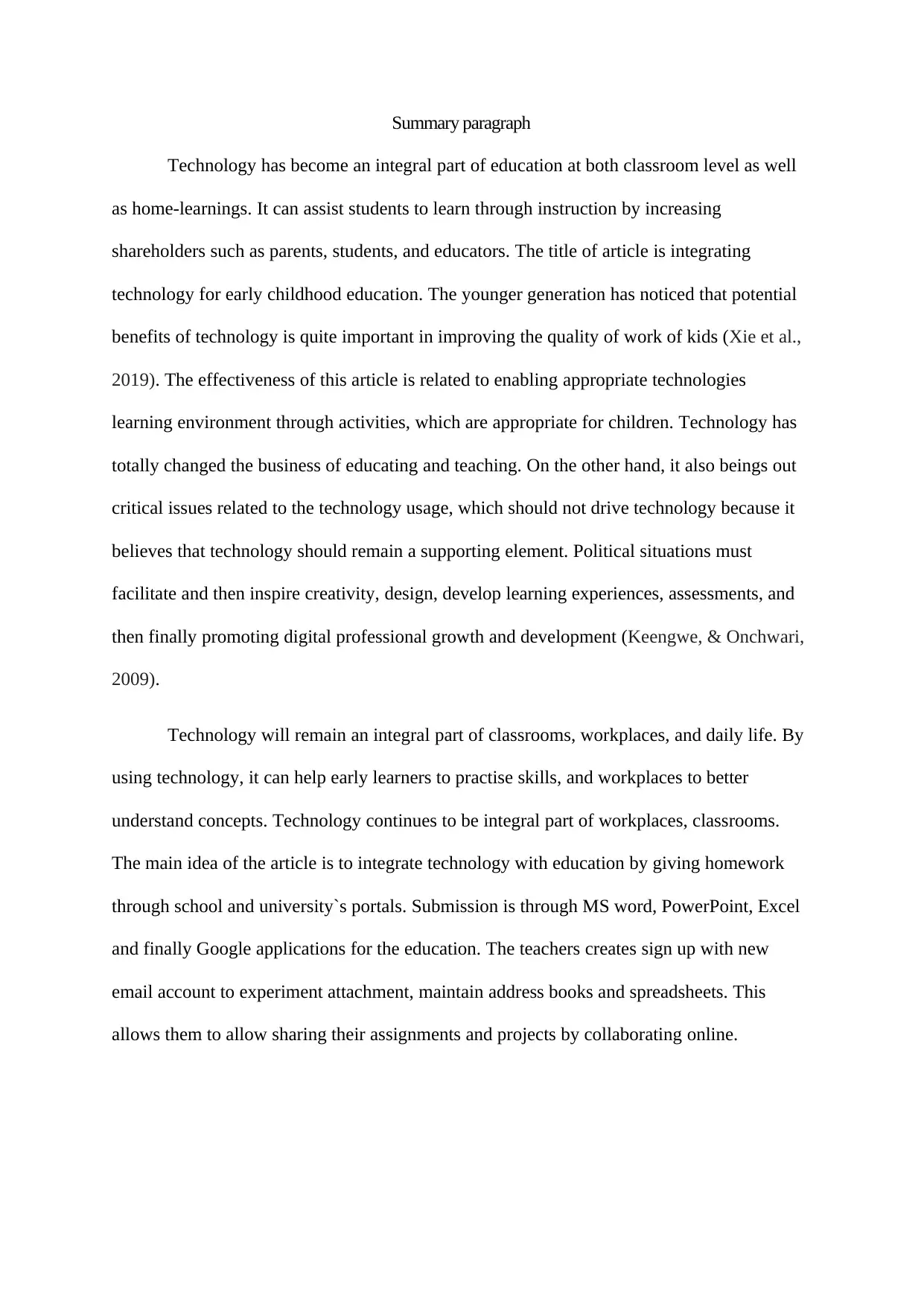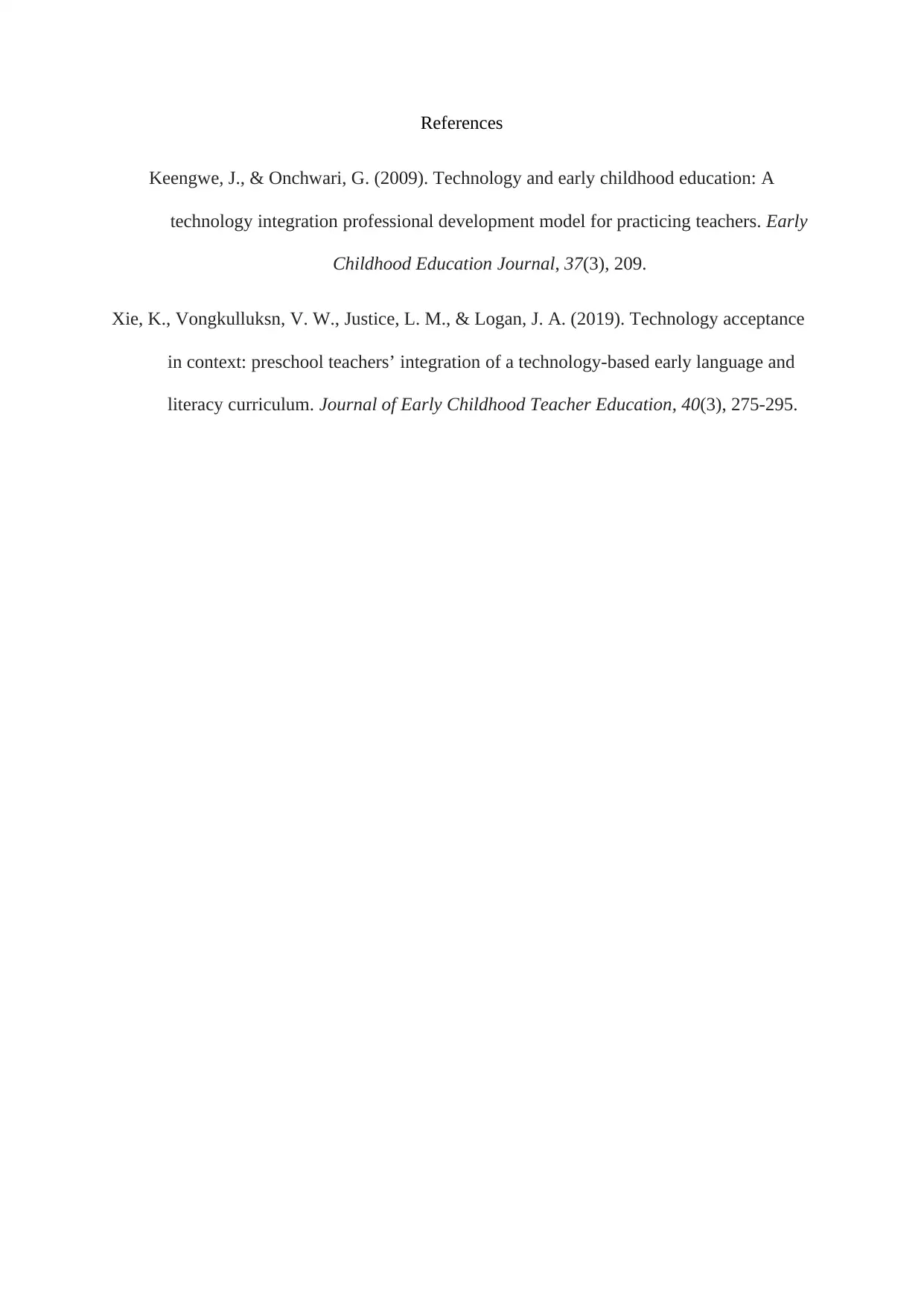Early Childhood Education: Technology Integration Report and Analysis
VerifiedAdded on 2022/07/29
|3
|400
|33
Report
AI Summary
This report delves into the integration of technology in early childhood education, emphasizing its role in enhancing learning experiences. The report highlights the significance of technology in both classroom settings and home learning environments, pointing out how it facilitates interaction among students, parents, and educators. The article discusses the challenges and opportunities presented by technology integration, the importance of using technology as a supporting element rather than a driving force, and the need for political support and professional development. The report also references the use of technology in the classroom to support early learners and the utilization of various software applications, such as MS Word, PowerPoint, and Google applications. The report also references a Summer Institute project that the authors facilitated in a medium sized midwest public university, which offered participating early childhood education teachers exciting opportunities to interact with various instructional tools and technology applications.
1 out of 3










![[object Object]](/_next/static/media/star-bottom.7253800d.svg)